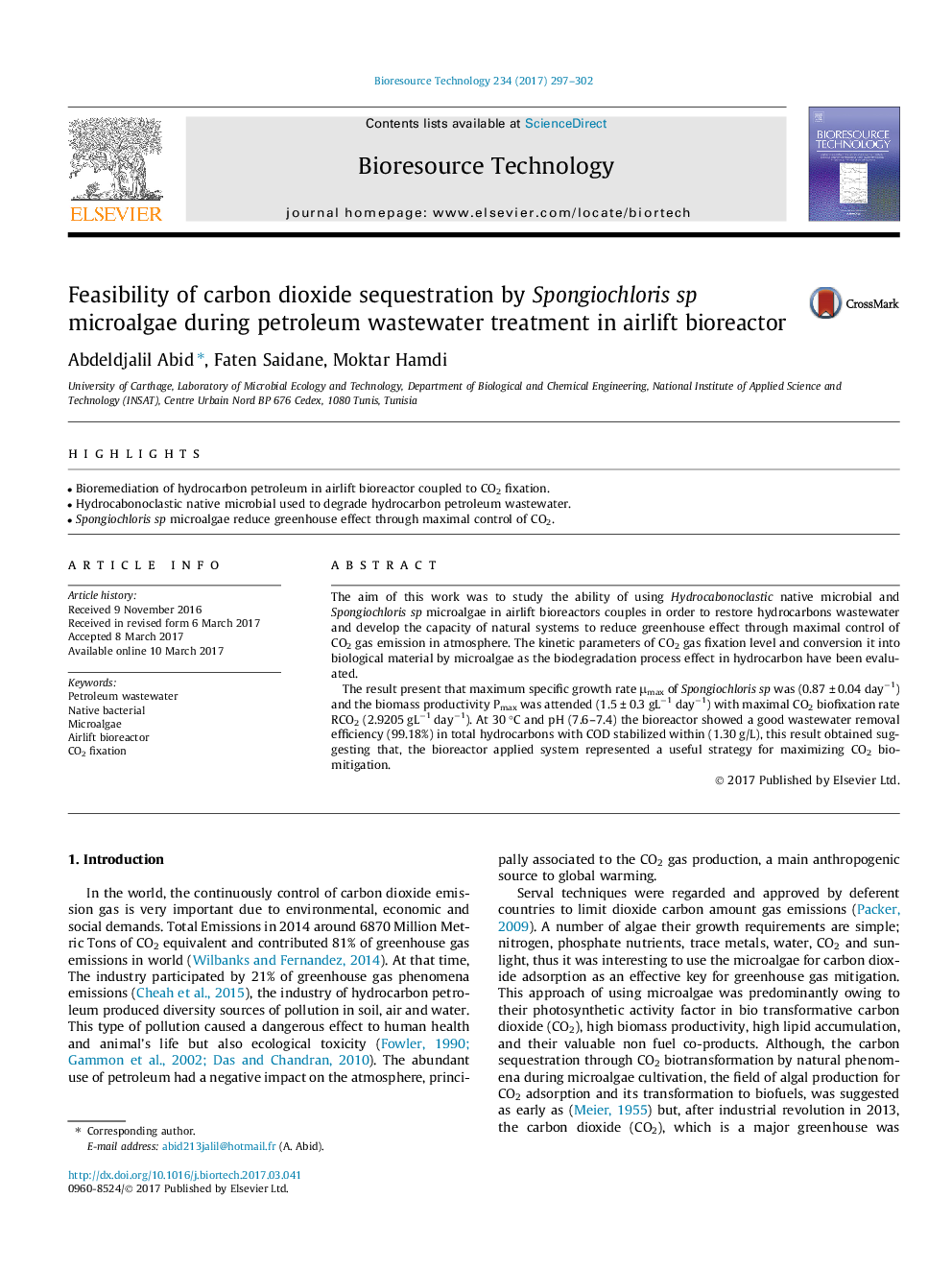| Article ID | Journal | Published Year | Pages | File Type |
|---|---|---|---|---|
| 4997308 | Bioresource Technology | 2017 | 6 Pages |
â¢Bioremediation of hydrocarbon petroleum in airlift bioreactor coupled to CO2 fixation.â¢Hydrocabonoclastic native microbial used to degrade hydrocarbon petroleum wastewater.â¢Spongiochloris sp microalgae reduce greenhouse effect through maximal control of CO2.
The aim of this work was to study the ability of using Hydrocabonoclastic native microbial and Spongiochloris sp microalgae in airlift bioreactors couples in order to restore hydrocarbons wastewater and develop the capacity of natural systems to reduce greenhouse effect through maximal control of CO2 gas emission in atmosphere. The kinetic parameters of CO2 gas fixation level and conversion it into biological material by microalgae as the biodegradation process effect in hydrocarbon have been evaluated.The result present that maximum specific growth rate μmax of Spongiochloris sp was (0.87 ± 0.04 dayâ1) and the biomass productivity Pmax was attended (1.5 ± 0.3 gLâ1 dayâ1) with maximal CO2 biofixation rate RCO2 (2.9205 gLâ1 dayâ1). At 30 °C and pH (7.6-7.4) the bioreactor showed a good wastewater removal efficiency (99.18%) in total hydrocarbons with COD stabilized within (1.30 g/L), this result obtained suggesting that, the bioreactor applied system represented a useful strategy for maximizing CO2 bio-mitigation.
